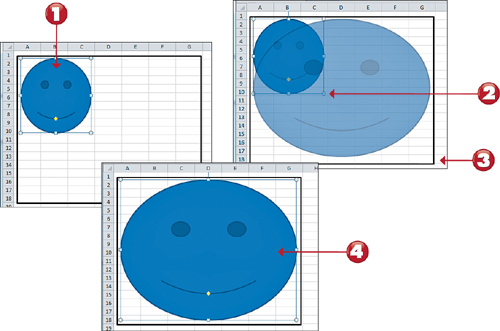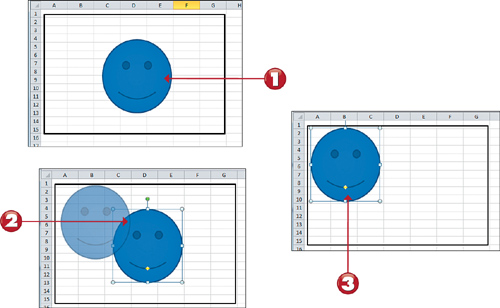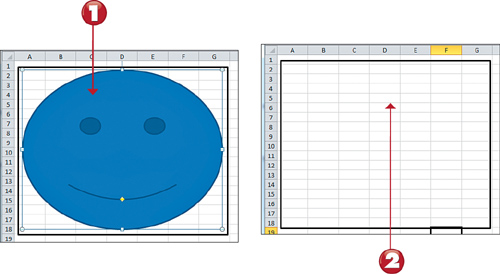Moving an Object
When
you draw an object on or add an object to a worksheet, you might not
like its placement. Perhaps the object obscures the worksheet data, or
maybe it needs to be moved a little closer to (or farther away from)
the data. Fortunately, you can easily move an object.

1. Select the object you want to move; selection handles appear around the edges of the object.
2. Click directly on the object or its border (not the selection handles)
and hold the left mouse button while dragging the object to the new
location.
3. Release the mouse button to drop the object in the new location. The object is moved.
Tip: Copying Objects
To copy an object, press and
hold down the Ctrl key on your keyboard as you drag; a copy of the
original object will be moved, with the original remaining intact where
it is. |
Note: Moving an Object to Another Worksheet
You can move your target
object to a separate worksheet by following these simple steps.
Right-click the target object, and select Cut. Next, move to the new
sheet, right-click in the spot where you want the object to appear, and
then select Paste. You can also use these steps to move your object to
a different workbook. |
Resizing an Object
If
an object is too big (or too small), change the size. You can modify
any type of object, including a picture, chart, or drawn object you
added. In addition, you can continue to resize the object over and over
until it is the size you want.

1. Select the object you want to resize; selection handles appear around the edges of the object.
2. Move the pointer over one of the selection handles (here, a corner
handle). When the pointer is in the right spot, it changes to a
two-headed arrow.
3. Click the handle, drag it, and release the mouse button when the object is the desired size.
4. The object is resized.
Note: Corners Versus Sides
Dragging the sides increases
or decreases the height or width of an object, whereas dragging the
corners increases or decreases the height and width of an object at the
same time. |
Note: Resizing Proportionally
If you hold the Shift key down while dragging a corner, the image enlarges or decreases in proportion. |
Deleting an Object
As
you experiment with charts, drawings, and pictures, you might go
overboard, or you might make a mistake and want to start over. In any
case, if you add an object and no longer want to include it, you can
delete it, as described here.

1. Select the object you want to delete; selection handles appear around the edges of the object.
2. Press the Delete key on your keyboard. Excel deletes the object.
Note: Undoing a Deletion
If you accidentally delete an
object, click the Undo button on the Quick Access Toolbar to undo the
deletion. Alternatively, you can use the Ctrl+Z shortcut on your
keyboard. |